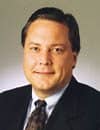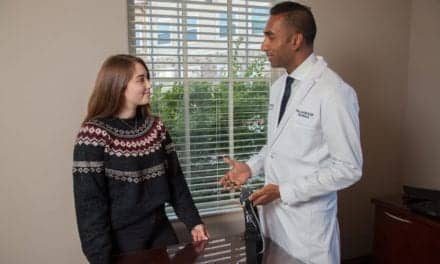No one is immune to oversights. Even well-intentioned people are subject to human errors, mix-ups, and omissions. What must be differentiated are the unavoidable, isolated incidents from systematic causes. Since scoring sleep studies is one of the most important tasks for accurate patient diagnosis, every effort should be made to prevent discrepancies. However, the current health care landscape is having an adverse impact on this indispensable skill of sleep medicine.
For example, reimbursement rates for sleep testing have been reduced, which could result in a decrease of profits for sleep labs. In turn, this could force labs to look for ways to offset their lost revenues. A common solution is to cut labor costs or skim back on resources, which inadvertently leads to decreased time devoted to quality standards. Furthermore, some hospitals are implementing cutbacks and hiring freezes. These factors combine to create an environment where senior technologists are overworked and must multitask with many interruptions, making sleep-scoring accuracy more difficult to attain, although its importance is by no means diminished.
What complicates matters is that scoring errors can occur without detection—that is, until it’s too late. So rather than wait to find out the hard way that a patient has been misdiagnosed, be proactive in refining your processes. Start by reviewing your quality assurance measures to give you, your staff, and your patients increased confidence in test results. Be aware of both best—and worst—practices. Not all sleep labs can prioritize the qualifications of their technologists and thus assign inexperienced individuals with inadequate understanding of scoring fundamentals to the analysis of patient sleep studies. Presumably, these facilities abide by the motto, “It’s been done this way for more than 15 years.”
Sleep study scoring suffers from a number of misconceptions. It has erroneously been viewed as a tedious task that is easily taught. In reality, scoring is a meticulous and intensive craft that requires thorough and ongoing training, a nuanced approach, and a rigorous review process to ensure accuracy, reliability, and consistency.
Regulation would no doubt help give this process and profession the respect it deserves, but to truly claim you have a diligent quality assurance system takes a little more than a status quo approach. In an attempt to keep scoring discrepancies to a minimum, consider hiring registered technologists, performing audits, establishing standards, looking for outside help, and using auto-scoring with caution.
HIRE REGISTERED TECHNOLOGISTS
Some sleep labs resemble five-star hotels. These facilities provide 600 thread count Egyptian sheets, duvets, flat screen TVs, continental breakfasts, and marble showers in private bathrooms. Ironically, many leave registered technologists off their list of privileged amenities. It is expected that a laboratory will make every effort to create a first-class experience for patients, and yet they omit the most critical component of service delivery—sleep studies scored by qualified, experienced, and registered sleep technologists.
Like a doctor, engineer, respiratory therapist, or nurse, a registered polysomnographic technologist takes pride in their credential. These individuals have spent years devoting their efforts to both upholding and elevating the principles of responsible sleep medicine. Highly trained and BRPT-tested professionals have the specialized experience to ensure scoring accuracy. RPSGTs are mandated to perform continuing education in order to maintain their RPSGT credential. With this in mind, it might be time to consider your stance on mandatory technologist qualifications. If your technologists are not currently registered, implement a skills upgrade program to encourage and facilitate the earning of their designation.
If you already insist on RPSGTs, consider highlighting this fact in your marketing materials. Remind clients and competitors where you have chosen to place your emphasis and lead the industry to the level of standardization and reputation it deserves.
PERFORM AUDITS AND REVIEWS
Audits are not nearly as intimidating as they sound. Randomly select patient files and conduct impromptu reviews to verify scoring accuracy as compared to established standards. Selecting files for each and every scoring technologist is key. Even senior scoring techs can fall into bad habits. Perform peer observations as part of an overall program to elevate quality assurance. Remind sleep technologists that such processes help maintain the integrity of their profession by ensuring that discrepancies are either avoided altogether, or identified quickly and acted upon. This method of quality control can go a long way to ensure an accurate, efficient, and liability-free service.
A monthly review of your laboratory’s sleep scoring can also guide a manager in determining the lab’s effectiveness and in establishing which scorers may require corrective measures to avoid possible misdiagnoses or loss of accreditation. The goal of an audit is to ensure that all scoring technologists are analyzing sleep records with uniform scoring criteria while at the same time implementing the necessary policies and procedures your sleep lab may require.
Admittedly, even the realization of a minor discrepancy—such as a misidentified arousal or respiratory event—can be difficult to own up to. As a result, such discrepancies are often swept under the rug. The problem then becomes a failure of communication. Transparency between medical directors and scoring staff should be an essential organizational value toward upholding the highest standard of patient care. So what does it take to nurture transparency? To begin with, try implementing mandatory monthly or quarterly meetings to discuss discrepancies in order to provide educational support. Remove the taboo around owning up to errors: create a culture where feedback and corrections are not punitive, and open communication along with further education that addresses the inconsistencies. Such meetings can assist with the identification of ongoing or persistent issues and ensure that bad habits become a thing of the past. This process also allows for open dialogue on scoring-related policies and helps get all scoring staff on the same page.
ESTABLISH SOLID STANDARDS
Inter-rater reliability testing helps keep internal standards on par with the industry’s by comparing one technologist’s scoring against that of a senior registered tech or physician.* It is recommended by the AASM that inter-rater reliability occurs on a routine basis with a minimum of 200 consecutive epochs from each of 3 studies per quarter, totaling 12 per year.* Regional standards set similar targets such as the Independent Health Facilities Act through the College of Physicians and Surgeons of Ontario which mandates inter-scorer reliability checks of at least 1% or 10 sleep studies per year as a component of the facility’s quality management program.* Inter-rater reliability compares all scoring technologists to that of the “gold standard,” which is typically derived from the scoring of a medical director. Partaking in this process will ensure that every scoring tech has a benchmark measure against which they can aim to improve.
In regard to the implementation of new staff, there should be a program in place to help calibrate their methods with those of your lab. To help attune them to your internal standards, team them up with a designated senior scorer who will review scoring results in parallel and compare for consistency.
USE AUTO SCORING WITH CAUTION
An abundance of software has been developed to assist technologists with scoring, but not to replace them. Automated scoring should never be used as the primary mode of analysis, but in many cases it is. Ensure your sleep facility has protocols in place regarding the use of automated scoring modules. Software should be viewed as serving a complementary function—in that it assists an RPSGT, who later verifies the automated scores manually and cross-references them with clinically obtained observations.
Furthermore, one must consider the long-term impact of reliance on scoring software. As a front-line, integrated health care professional, the RPSGT gathers crucial clinical information. The knowledge and skills that arise from working with different patients and various symptoms and conditions could be lost should technologists be removed from the equation. It is essential for labs to monitor and ensure that any use of automatic scoring is subject to further review.
LOOK FOR OUTSIDE HELP
Hospitals and private sleep laboratories are bursting at the seams with sleep study backlogs. Unable to locate qualified technologists and staff, some labs may feel forced to hire inexperienced or untrained individuals to help pick up the slack, rather than looking at other business alternatives. What begins as a matter of process management becomes an issue of reduced patient care as quality assurance drops by the wayside in favor of efficiency. Quality assurance is often seen as a time-consuming concern secondary to budget and staffing issues. The adoption of this attitude can be a critical error when a sleep lab finds itself inadequately performing the task of scoring.
What many hospitals don’t realize is that quality versus efficiency and cost is not necessarily an either/or debate. Both accuracy and accountability can improve with the incorporation of an outside sleep scoring firm that specializes exclusively in third-party scoring.
Look for a company with a solid reputation and devoted, internal quality assurance managers. Hiring a professional sleep scoring company will maintain quality assurance values and lab efficiencies to help keep patient care a number one priority. Third-party scoring partnerships are an ideal strategy for accessing RPSGTs when none are available for hire. Such firms can ensure that your sleep studies are scored by registered sleep technologists in a timely and rapid manner—often within 24 hours, allowing you to deliver patient diagnoses in record time.
REMAIN VIGILANT
Even registered technologists need to be tested and reviewed to ensure the scoring of sleep studies is being done correctly. Just because someone has the RPSGT credential does not necessarily make them a perfect scorer. Practice and experience are essential. Quality assurance through peer review and randomly selecting studies for evaluation are key. Like every other medical profession, it is crucial that all technologists remain educated and updated on advances in sleep medicine. The industry has made significant changes over the past few years, and continual education is key to remain ahead of the curve.
You might never know that a sleep study has been incorrectly scored until it is too late, a patient realizes they have been misdiagnosed, a chance occurrence reveals staff inadequacies, or you lose accreditation for not adhering to regulatory guidelines. Ensuring you have a solid quality assurance program in place—one that is not just written on paper but is being practiced on a daily basis—is essential. Some health insurance providers require their clients to attend nothing short of an accredited sleep laboratory in order to be eligible for coverage. Likewise, sleep labs seeking such accreditation from the AASM must have a comprehensive quality assurance program in place.
The health of your patients and the reputation of our industry depend on accuracy and integrity. There is more than one way to score a study, but in an industry looking to standardize, there shouldn’t be.
Natalie Morin, RPSGT, is president and CEO of Sleep Strategies Inc, a provider of sleep scoring and consulting services for leading hospitals, private sleep clinics, pharmaceutical companies, home care organizations, and research universities worldwide. The author can be reached at [email protected].
*Corrected 03/11/11.




